Solving For ‘X’
There are a lot of problems that any good holster needs to resolve for the wearer. Any holster, regardless of carry position, must perform a crucial function. It needs to protect the trigger and prevent the firearm from discharging inadvertently.
Holsters also need to securely hold the gun in its intended position while freely releasing it on the draw. A fixed opening that allows the user to reholster the firearm after it is drawn safely is also essential. Along with trigger protection, retention, and reholstering basic expectations, a good holster allows for ride height adjustment and cant adjustment so we can fine-tune, with the other features, how the holster interfaces with the body, how it feels, and how well it conceals. A holster is an administrative place for a handgun, akin to a rifle sling, and the holster should keep the firearm in position safely for the user.

Mathematical and physical formulas against the background of a galaxy in universe. Space Background on the theme of science and education. Elements of this image furnished by NASA.
AIWB Holsters Challenges
An appendix in the waistband (AIWB) holster is no different in these general safety requirements. However, the specific carry location presents issues above and beyond that of a regular IWB holster. The appendix carry position is not a novel concept; however, it has gained popularity in recent years. There was a period when out-of-waistband (OWB) holsters were the norm and inside the waistband (IWB) on the strong side became the preferred option. Today’s modern AIWB, which we are striving to perfect, has been in production for only about 15 years. It represents an evolving approach to concealed carry that emphasizes accessibility and comfort.
Four Key Features:
When considering the appendix carry position, there are four key features a quality holster must have. These are essential for addressing issues related to both comfort and concealment in modern AIWB holsters.
- Muzzle Extension
- Belt Wedge
- Wing/Trailing Lever
- Muzzle Wedge/Pad
The simplest of the features is what we’ll call the muzzle extension. Muzzle extension is a process that is helpful in both concealment and comfort. If you’ve noticed that a smaller handgun tends to print more than a larger one, it could be puzzling. This issue often arises when the muzzle is too short, which fails to prevent the firearm from canting forward above your belt line. Muzzle extension is a solution to this issue. This is accomplished in two ways. The classic method is to do something as simple as purchasing a holster for the next pistol size up. A holster for the “duty” variant of your favorite pistol line is likely capable of safely holstering the shorter “carry” version.
Alternatively, we introduced a solution to the market years ago. We designed holsters for smaller guns with an integrated extension in the mold to combat this issue. We first did this with wood and clay on inert guns prior to designing our molds from the ground up. Either way, the result is the same. Our design increases the holster’s slide portion beneath the belt. This creates leverage, pushing the muzzle out and the grip in, for better concealment. Consider an iceberg: what prevents it from tipping over is the mass of ice beneath the water’s surface, not the portion that’s visible above.
Similarly, a longer slide under the belt line stabilizes a handgun’s exposed slide and grip, reducing the tendency for the firearm to tip forward at the belt line. An additional benefit here is that the corner of the slide on the muzzle is lower, and with the longer lever, it applies less inward force to the softer pelvic tissue. In other words, less poking uncomfortably in toward your belly. As a result, the muzzle extension helps the AIWB holster to be more comfortable and concealable for wearers.
Next, a belt wedge is one of the main features that started the modern wave of AIWB. With a built-up portion of Kydex under the belt, the thicker wedge pushes the grip in more than a regular slimline holster does. Having a thicker holster to increase concealment might seem counterintuitive, but it works well. Makers would form larger door-stop-looking features over the gun that would use the belt to rotate the grip. Although effective, wedges did present some issues for specific modes of dress and people with smaller frames because the added wedge on the holster made the thickness of the belt too much for some to conceal well. Consequently, belt wedges are no longer standard on holsters. However, the lessons learned from them have been invaluable. Holster engineers now understand the advantages of features that pronate the grip inward, enhancing the firearm’s security and concealability.
The belt wedge helped pave the way for the wing/trailing lever, a popular option with Dark Star Gear holsters today. The wings can function similarly to the belt wedge but without the bulk, which was an issue with the wedge. With injection molding becoming more feasible for holster makers, adding a small plastic lever or wing allows the holster to remain thin, with a small addition of material forming a lever directly under the belt. This wing relies on a small amount of tension in the belt to react against, providing an inward force on the holster, which pushes the grip inward to the body, adds a ton to concealment, and helps keep the firearm well concealed. The wing also has the benefit of helping to smooth out the line of the belt outside of the holster since it extends the belt curve slightly. This makes the belt look smoother, less lumpy, and thus more natural.
Lastly, a DIY-born solution, the muzzle wedge or pad, is used. Wedges and pads are a handy addition to AIWB holsters. Wedges, a hard, formed feature on the body side along the muzzle section of the holster, and pads, soft wedges that are often made of foam or very pliable material and are placed in a similar location, are integral in adding cushioning as well as helping to angle the grip of the firearm in toward the waist. This angling helps to reduce printing while adding comfort. Many makers use both, adding a small pad over the top of a formed feature. Sometimes, even something as thin as a layer of loop fastener is enough to pad the holster and make things comfortable for the user. A common excuse among people reluctant to carry AIWB is that they are worried that the appendix position will be uncomfortable. Adding a muzzle wedge or pad is an easy and economical way to make an AIWB holster work well without discomfort. Muzzle wedges or pads are easy modifications to add and customize, and the benefits of using wedges or pads can be measured in both comfort and concealability.
A good appendix holster will balance many of these features simultaneously. It’s common to see a user add a pad to a winged holster, yielding rotation on two axes, maximizing concealment, and allowing the wearer to dress usually rather than the cliche ‘dress for the gun.’ AIWB holsters are not mysterious, nor are they uncomfortable and complicated. A few key features added to what a quality holster should already have will make an AIWB holster comfortable and wearable. After all, that holster will be a daily addition to your wardrobe, so it needs to work well.


